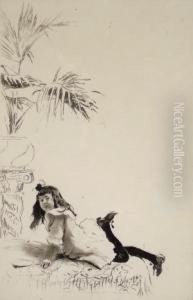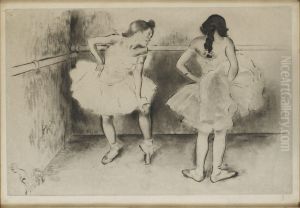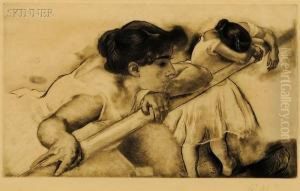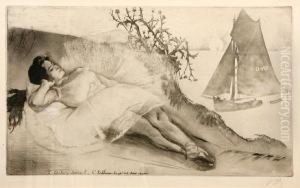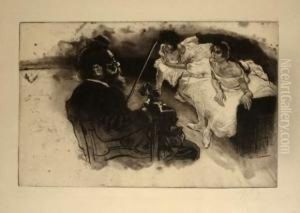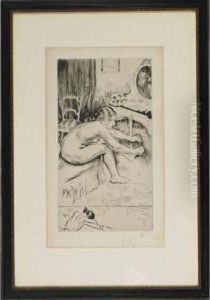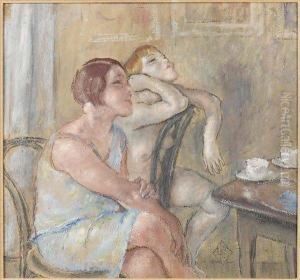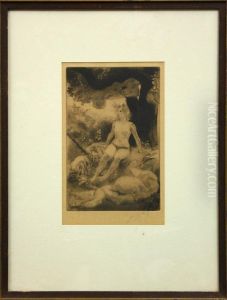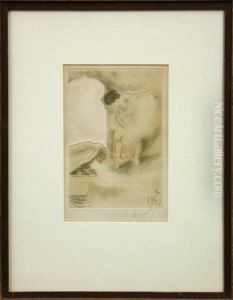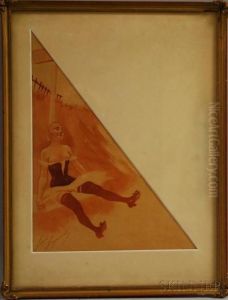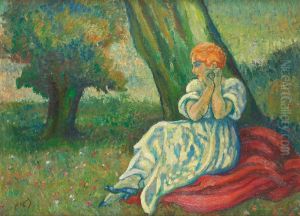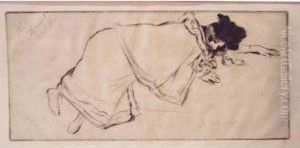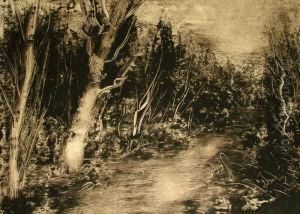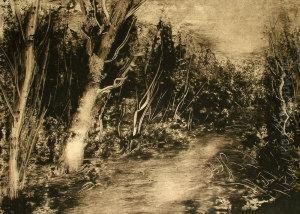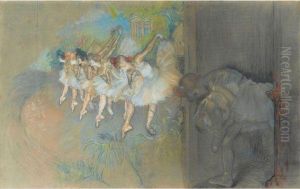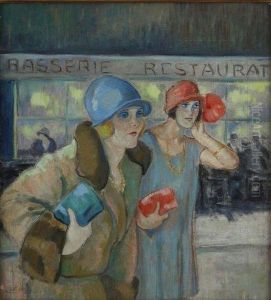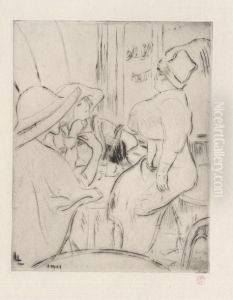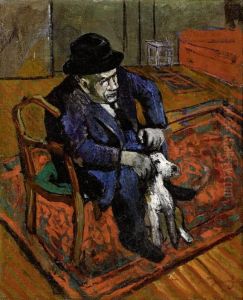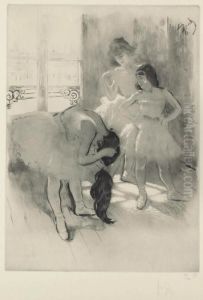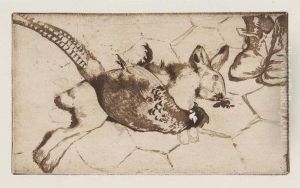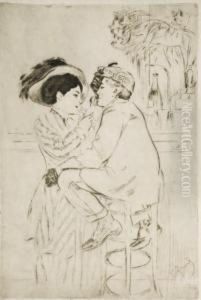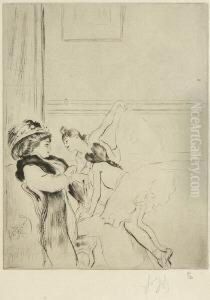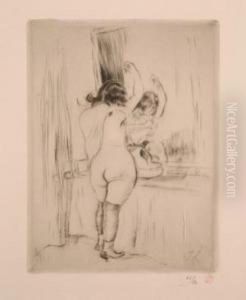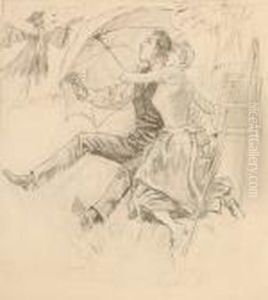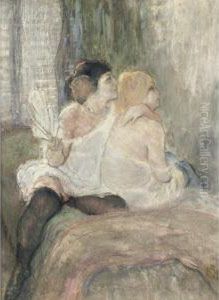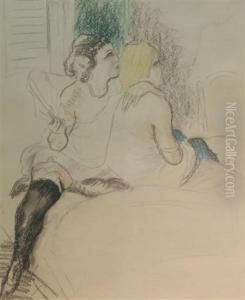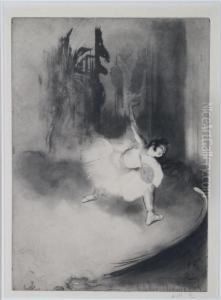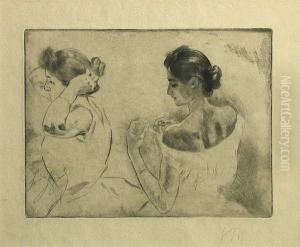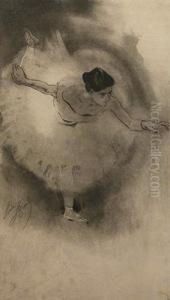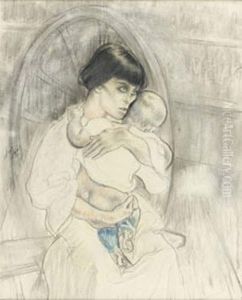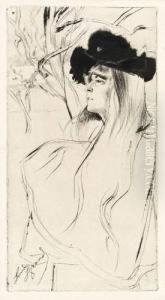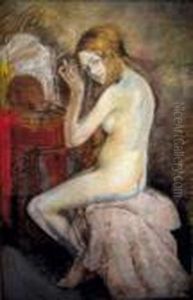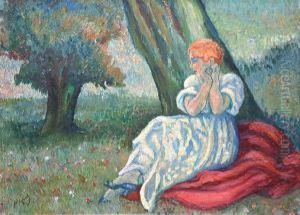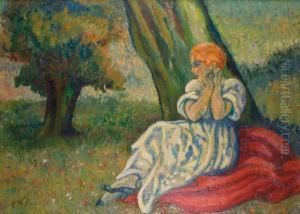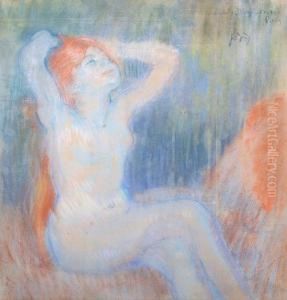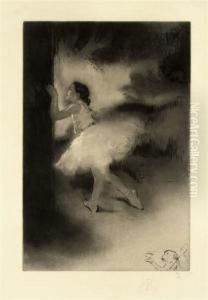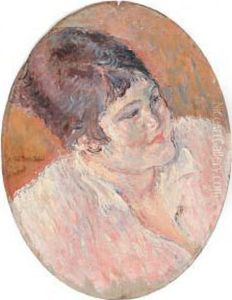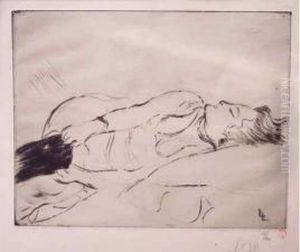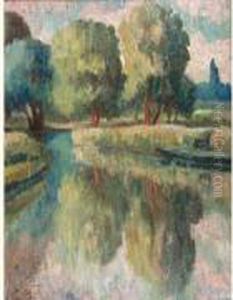Louis Auguste M. Legrand Paintings
Louis Auguste Mathieu Legrand was a French artist born on September 29, 1863, in the city of Dijon. He was known for his etchings, drawings, paintings, and aquatints. Legrand studied at the École des Beaux-Arts in Dijon before moving to Paris, where he continued his education under the academic painter Jean-Léon Gérôme at the École nationale supérieure des Beaux-Arts.
Legrand's work is characterized by a blend of realism and impressionism, often depicting scenes of Parisian life, including the nightlife, café scenes, and the ballet. He was particularly fascinated by the figure of the Parisian woman, from elegant society ladies to the dancers and waitresses that populated the city's entertainment venues.
In the 1890s, Legrand became associated with the Symbolist movement, and his work from this period reflects an interest in themes of love, death, and the passage of time. He collaborated with the publisher and printmaker Edmond Sagot to produce illustrations for books and magazines, which helped to popularize his work.
Legrand was also a member of the Société des Peintres-Graveurs Français (Society of French Painter-Printmakers) and exhibited his work at the Salon des Artistes Français and the Salon de la Rose+Croix, among other venues. His etchings and illustrations received critical acclaim and earned him several awards, including a gold medal at the Exposition Universelle in 1889.
Throughout his career, Legrand experimented with various printmaking techniques, and his contributions to the field of graphic arts are notable. He was a master of the aquatint process, which allowed him to achieve rich tonal effects in his prints.
Louis Auguste Mathieu Legrand's artistic legacy includes a diverse body of work that captures the vibrancy and complexity of fin-de-siècle Parisian culture. He passed away on September 18, 1951, in Livry-Gargan, leaving behind a significant impact on the world of French art and printmaking.
